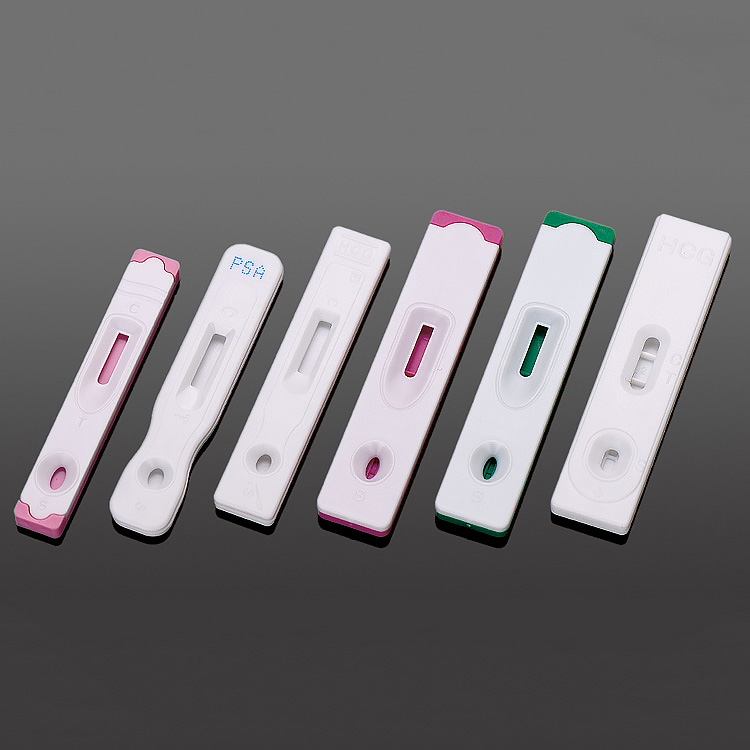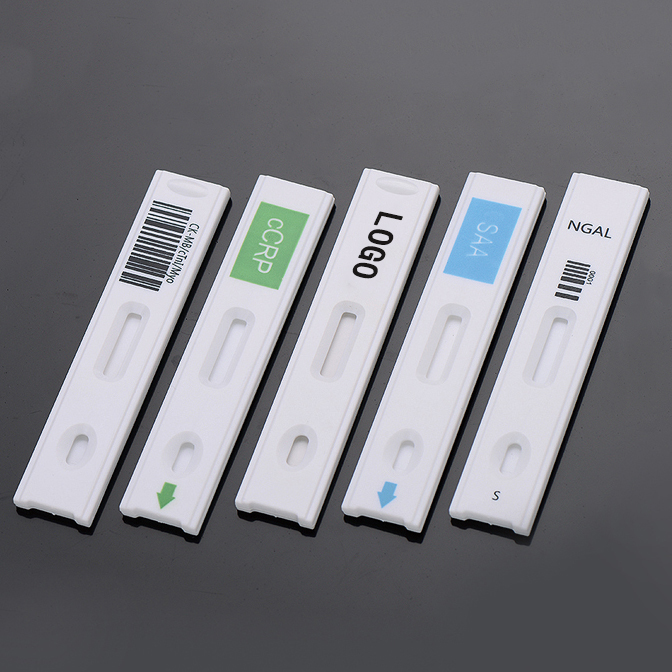Oct . 01, 2025 10:00 Back to list
Cassette Lateral Flow: OEM ABS Cassettes, CE, Fast Ship?
If you work with rapid diagnostics, you already know the humble housing can make or break assay performance. The cassette lateral flow shell is more than a box; it’s fluidics, ergonomics, reliability—packaged. I’ve toured a few molding shops in Hebei and Guangdong over the past year, and, to be honest, the best kits didn’t just have smart chemistry. They had cassettes that sealed cleanly, aligned the window precisely, and didn’t warp after a summer in storage.

Product snapshot: ABS Plastic Empty Cassette
Manufactured in No.136, Shiji West Road, Gaobeidian City, Hebei Province, this ABS housing is designed for human health, food, veterinary, HCG and other rapid tests. Three things stood out in handling samples: the ABS feels sturdy, the top and bottom covers mate tightly (less wobble), and assembly is, well, refreshingly simple. Many customers say “no drama” when they swap it into existing strip assembly lines—always a relief.

Why the housing matters (industry trends)
Demand for cassette lateral flow formats is moving beyond clinical to food safety and environmental monitoring. Teams are asking for lower background plastics, tighter tolerances around windows for phone-based readers, and options like matte lids to reduce glare. Sustainability is creeping in, too—light-weighted frames and recycled cartons. Surprisingly, the big win lately isn’t exotic polymers; it’s consistent ABS plus sensible QC.
| Spec | ABS Plastic Empty Cassette (indicative) |
|---|---|
| Material | ABS (medical-grade options on request); RoHS compliant |
| Dimensions | ≈ 60 × 30 × 6 mm (common footprint; other molds available) |
| Compatible strips | 3–5 mm widths; nitrocellulose standard lengths around 20–30 mm |
| Tolerances | ±0.15 mm typical real-world use may vary with mold |
| Surface finish | Matte or semi-gloss lid; clear window options |
| Service life | Up to 24–36 months in carton at 2–30°C, |
| Sterilization | Non-sterile as supplied; EO tolerant; gamma may yellow ABS—verify |
| Assembly | Snap-fit top/bottom; adhesive or ultrasonic weld lanes on request |

Process flow and QC (what to ask your vendor)
- Material control: ABS lot traceability; incoming inspection (MFR, color, odor).
- Injection molding: optimized gate to prevent sink at window ribs; deionized air cleaning.
- Assembly fit test: lid/base snap force checked; window alignment jig ±0.2 mm.
- Sampling per ISO 2859-1 (AQL 0.65–1.0) for dimensions, flash, warpage.
- Drop test: 1 m onto ABS tile, 3 orientations, no latch fracture (screening).
- Aging: accelerated aging per ASTM F1980 to estimate shelf-life.
Recent internal lot example (n=500) shared during a visit: dimensional non-conformance 0.6%, lid/base mismatch 0.2%, visible defects 0.8%. Not perfect, but better than many I’ve seen.

Applications and customization
Use cases for cassette lateral flow housings span: HCG/FSH, infectious disease POCT, veterinary parasitology, mycotoxins (aflatoxin), antibiotic residues in milk, and on-site water tests. Customizations include twin-sample wells, QR-ready flat lids, anti-glare matte, color coding, tamper seals, and reader guides for smartphone apps.
| Vendor | Tooling & Tolerance | MOQ/Lead Time | Notes |
|---|---|---|---|
| PrisesBio (Hebei) | Multi-cavity; ±0.15 mm typical | ≈10k pcs; 2–4 weeks after PO | Tight lid/base fit; responsive on custom lids |
| OEM A (SZ) | Older mold; ±0.2 mm | ≈20k pcs; 4–6 weeks | Budget option; shiny lids may glare |
| Importer B (EU) | Mixed sources | Stock-dependent | Convenient; harder to trace lots |

Case study: food safety strip, glare problem solved
A mid-size lab building an aflatoxin cassette lateral flow test had reader errors because the lid reflected light. The quick fix was a matte finish and a slightly taller window boss to hold the strip flat. Lead time was three weeks; field complaints dropped to near zero. Their tech lead told me, “actually, we spent months on antibodies and five days on the cassette—but that’s what users noticed.”
Compliance, standards, and what to verify
For regulated markets, request documentation: quality system (e.g., ISO 13485), material safety and biocompatibility data (relevant parts of ISO 10993 for contact surfaces), and risk files aligned with ISO 14971. If your assembled test is IVD for EU/US, ensure the housing specs fit your performance files under IVDR 2017/746 or FDA POCT guidances. Also check chemical compatibility with buffers (Tween-20, NaCl, mild detergents) and adhesives; ABS is robust, but strong solvents can stress-crack.
Final note: price matters, but in my experience, stable molding plus clean assembly saves more downstream than it costs upfront.
Authoritative citations
- ISO 13485:2016 — Medical devices — QMS requirements for regulatory purposes.
- ISO 14971:2019 — Application of risk management to medical devices.
- ISO 10993 series — Biological evaluation of medical devices (material contact considerations).
- ISO 2859-1:1999 — Sampling procedures for inspection by attributes (AQL).
- ASTM F1980-21 — Standard Guide for Accelerated Aging of Sterile Barrier Systems and Medical Devices.
-
Rapid Syphilis Test Kits – Fast, Reliable Diagnosis for Global Health
NewsNov.21,2025
-
Fast Syphilis Test: Rapid, Reliable Diagnostics for Global Health
NewsNov.20,2025
-
Serology Syphilis Test: Global Importance and Latest Diagnostic Advances
NewsNov.20,2025
-
Diagnose Syphilis Test – Essential Screening & Diagnostics Explained
NewsNov.19,2025
-
Comprehensive Guide to Diagnosis Syphilis Test Technologies & Applications
NewsNov.19,2025
-
Comprehensive Guide to Syphilis Test Dubai – Early Detection & Reliable Screening
NewsNov.18,2025

